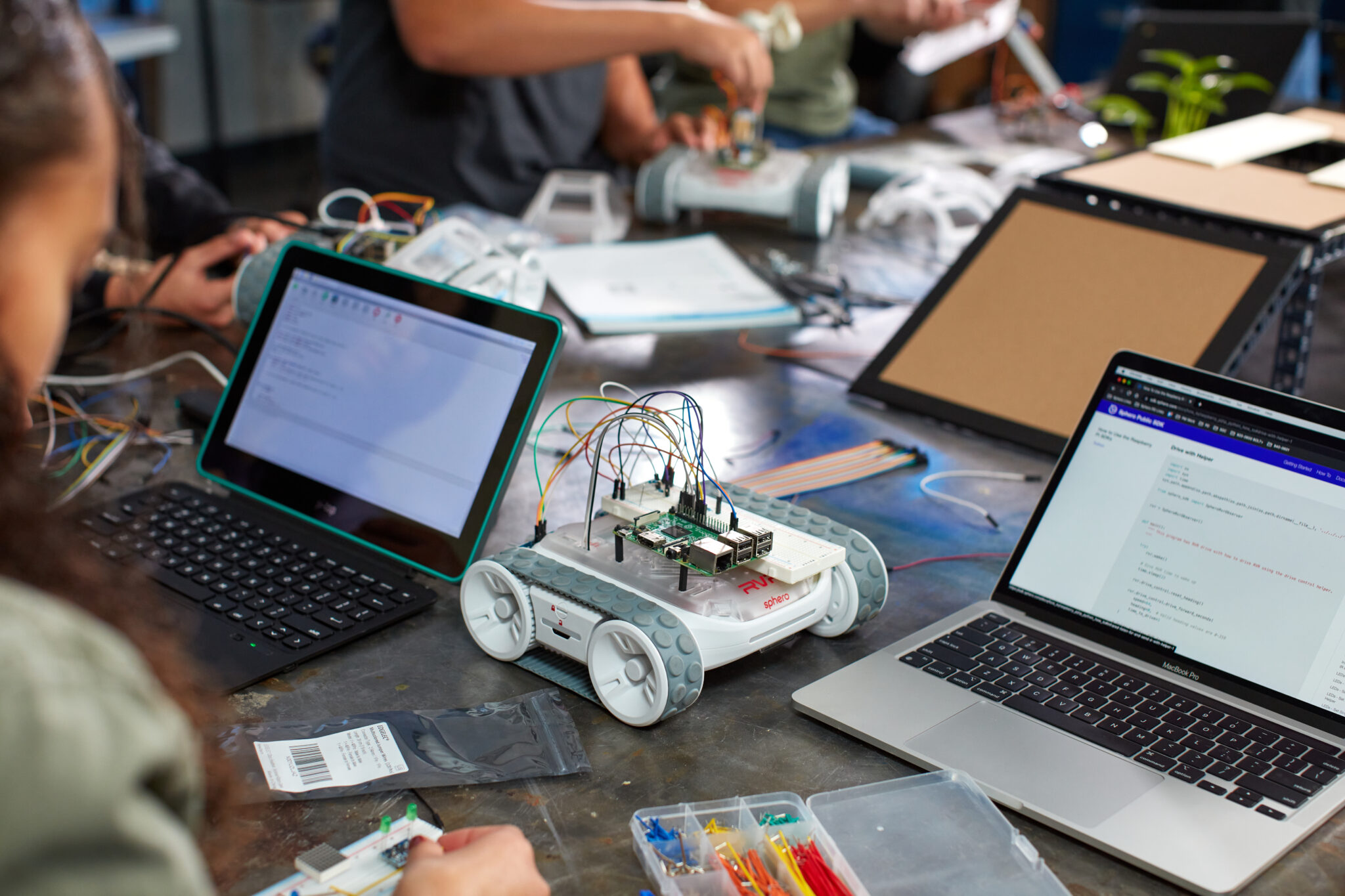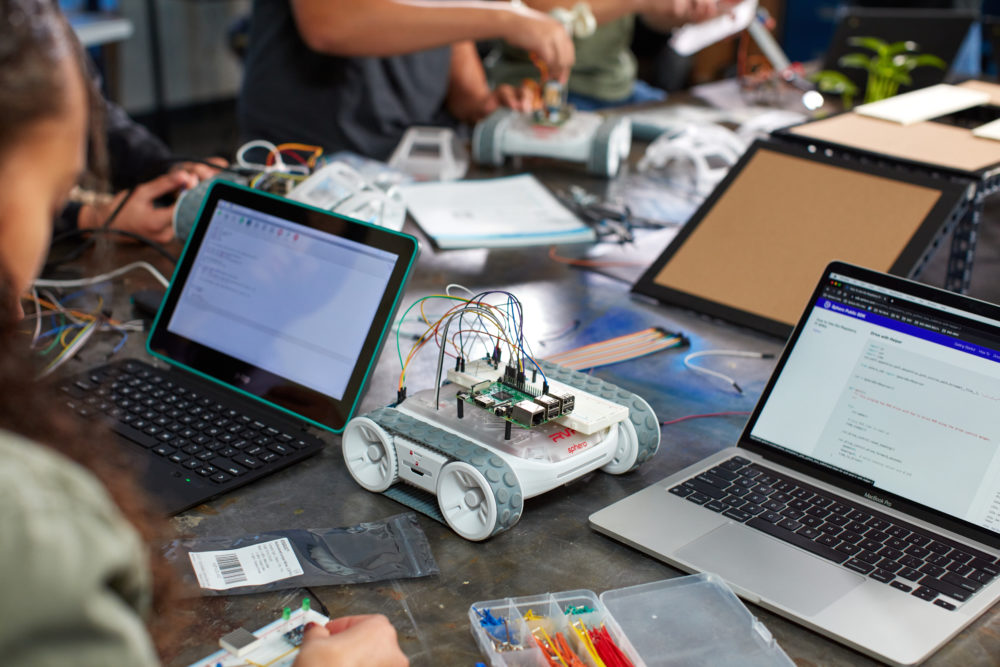
Customer Spotlight: How Sphero builds robots remotely
One of Sphero's Senior Electrical Engineers shares what makes a successful work-from-home culture
The pandemic shifted our lifestyles. We switched to meetings over Zoom rather than conference rooms, learning new skills online instead of in a classroom, and working out at home rather than going to a gym. And of course, the biggest change for many of us was the huge transition to remote work. According to a US Bureau of Labor Statistics study from 2022, 58% of employed respondents (~92 million people) report that they now have the option to work from home for all or part of the week.
Even though the world has opened up, it’s clear this new digital worklife is here to stay. And of course with it come challenges and benefits. One company that’s embraced the flexible work from home ethos is Sphero, a company that builds programmable robots and STEAM-based educational tools for students and educators. Its company culture has been recognized and it was awarded best workplaces by Inc. Magazine and Quantum Workplace in 2022.
Even though the company’s mechanical and electrical engineers are building physical products, they’ve managed to shift to an 100% remote workforce. We caught up with Bryce Gatson, Sphero’s Senior Electrical Engineer, to learn more about how engineers handle parts, soldering and collaboration remotely. It’s clear his life has changed for the better.
First up, when did Sphero decide to go fully remote and what inspired the decision?
The company transitioned to being 100% remote in 2020. This was expedited by the pandemic but Sphero’s CEO Paul Copioli was always passionate about this. He also instigated a four-day workweek with the intention of increasing employee retention.
How do you handle all the engineering equipment?
Everyone in the electrical engineering group has their own oscilloscopes, professional soldering irons, and multimeters. We also have some higher-end equipment that we can ship to whoever needs it, typically when we need to do a deep dive into how a PCB is operating. We have a heavy duty shipping case and a good relationship with UPS! Because we end up doing quite a bit of shipping that helps with the rates. So far, only one small PCB sample has got lost and we had extras so it wasn’t a problem.
All the mechanical engineers have 3D printers at home. That way, they can create the mechanical models and print 3D objects in a matter of hours.
Whenever we get prototypes, we send them to our team distribution list so we all have the same device to test and work on as we need to.

How do you stay connected to the rest of the team?
We have regular meetups both at the team level and at the company level. Everyone flew into Dallas for our holiday party and over the summer we all went to watch a concert at Red Rocks in Denver. That’s been great for team bonding.
What were some of the challenges in switching to this model?
Learning new skills. Our firmware group had to work on their soldering skills! Since the electrical engineers aren’t there to make modifications for them, they either have to ship the PCB to us to change or alter it themselves. Luckily most of our firmware engineers originally went to school to become electrical engineers so it wasn’t too much of a stretch. Similarly, the electrical team had to get copies of all the firmware programming tools so that we can program the firmware onto our devices.
Desk space! I had to get a much bigger desk because now I have all my soldering and heavier lab equipment at home. Fortunately, I have a garage. Whenever we’re hiring people now we have to make sure that they have space to do prototyping work. It probably won’t work in a one bedroom apartment.
What software do you use to help you collaborate?
On the electrical engineering side, we use Altium’s cloud platform for our eCAD designs. This gives us robust backups and the ability to work on the same file simultaneously. We carry out all of our initial design reviews in Altium.
Our mechanical engineers use Solidworks. They exchange files over Google Drive, which works because they’re not collaborating in real time and their files are much bigger.
We use Duro for PLM. We wanted something that was purely web-based with a good user interface. Duro is really easy to use and set up so we didn’t need to hire anyone to maintain it. We use it for our document of record and reviews before sending them to our contract manufacturer (CM). It allows us to iterate on designs: if something needs to change, we have a record of what it was before and what it was now. For example, it shows changes over time in the BOM so you can see which resistors changed from one revision to the next.
Of course we also have collaboration tools, like Zoom for calls and Basecamp for communicating with CMs.
How has Sphero benefited from this new work environment?
- Saving on office space – Even though we need to pay to ship and provide equipment for all of our employees, we still end up saving money on office space. We previously had an office in Boulder, where real estate is expensive.
- Collaboration – Surprisingly it’s actually easier to collaborate because we can all have the same design up on our screens and talk through it live. Previously we’d have to print stuff or go to someone else’s desk. This set up works really well for electrical engineers and our firmware group.
- Hiring and retention – New candidates can be based anywhere in the United States. Now, we have people across the country, from Indiana, to North Carolina and New York. We can really hone in on what skills are important for the job and have a greater pool of candidates. The four- day workweek and remote option means we haven’t had a problem filling any position in a timely fashion. Additionally, our employee retention rate is very high.

What’s different about your life now?
For me, I like it because I can schedule the time I need to work and not be interrupted. If you’re in an office, you can easily pop by someone’s desk and chat but that can interrupt what you’re doing and cause distractions. Oh and I always know where my tools are since I’m the only one using them.
It’s been very helpful for having some work-life balance and separating work versus personal time. Now, I enjoy taking time for lunch or taking my dogs for a walk to clear my head. When I was in the office, I’d often have lunch at my desk or be chatting about work.
One of our main suppliers, Texas Instruments, is based out of Dallas, about a 10 minute drive from me. So it’s still easy to speak with them or meet with their engineers at their facility.
I do miss seeing people in person but fortunately where I live, there’s coffee shops so I can interact with people when I want. I actually find myself being more productive because I can focus.
It seems like remote work has improved your life. Do you have any tips for companies or employees that are still adjusting to this type of work environment?
I find it beneficial to have a dedicated area for work to separate my home and work lives physically. I have talked to many individuals who have struggled to work out of their bedrooms or other shared space, and they have expressed difficulties staying on task or ending the work day at a reasonable time.
With regard to companies, providing their employees with the tools needed to accomplish their tasks is vital. In today’s world of remote working, having a high-quality camera and a good audio setup is crucial. If the audio or video quality is poor, it can distract others and potentially diminish the effectiveness of the meeting. The same can be said for displays; having multiple or large monitors helps reduce eye strain and makes working on complex tasks easier.
On a personal note, I use a standing desk to keep myself on task and communicate more effectively during meetings. Using a standing desk will not work for everyone, but I have used them for years at home and in the office and found them very useful.
